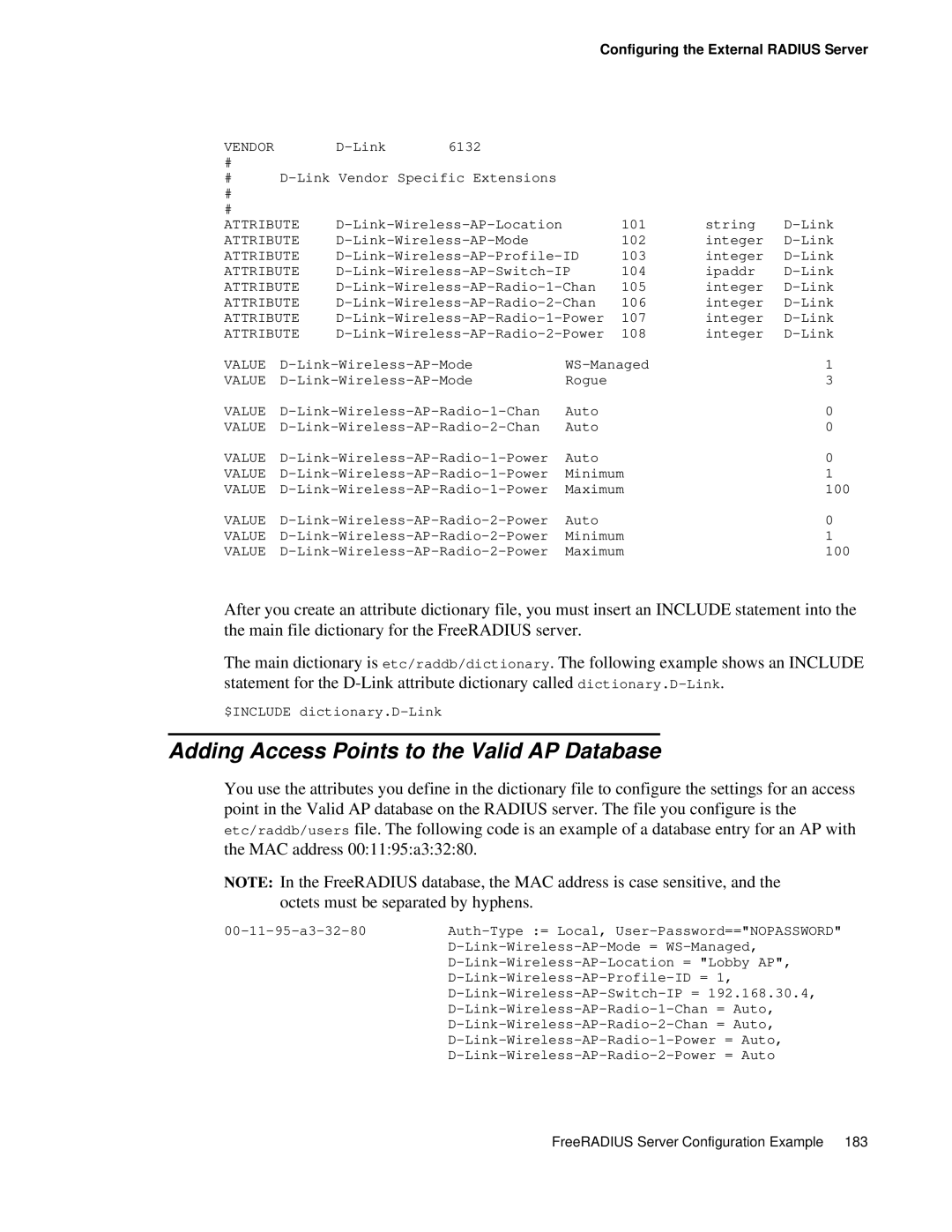Configuring the External RADIUS Server
VENDOR | 6132 | |
# |
|
|
#
ATTRIBUTE |
| 101 | string | ||
ATTRIBUTE |
| 102 | integer | ||
ATTRIBUTE | 103 | integer | |||
ATTRIBUTE | 104 | ipaddr | |||
ATTRIBUTE | 105 | integer | |||
ATTRIBUTE | 106 | integer | |||
ATTRIBUTE | 107 | integer | |||
ATTRIBUTE | 108 | integer | |||
VALUE |
| 1 | |||
VALUE | Rogue |
|
| 3 | |
VALUE | Auto |
|
| 0 | |
VALUE | Auto |
|
| 0 | |
VALUE | Auto |
|
| 0 | |
VALUE | Minimum |
| 1 | ||
VALUE | Maximum |
| 100 | ||
VALUE | Auto |
|
| 0 | |
VALUE | Minimum |
| 1 | ||
VALUE | Maximum |
| 100 | ||
After you create an attribute dictionary file, you must insert an INCLUDE statement into the the main file dictionary for the FreeRADIUS server.
The main dictionary is etc/raddb/dictionary. The following example shows an INCLUDE statement for the
$INCLUDE
Adding Access Points to the Valid AP Database
You use the attributes you define in the dictionary file to configure the settings for an access point in the Valid AP database on the RADIUS server. The file you configure is the etc/raddb/users file. The following code is an example of a database entry for an AP with the MAC address 00:11:95:a3:32:80.
NOTE: In the FreeRADIUS database, the MAC address is case sensitive, and the octets must be separated by hyphens.
FreeRADIUS Server Configuration Example 183
